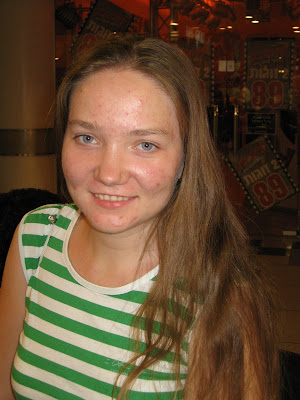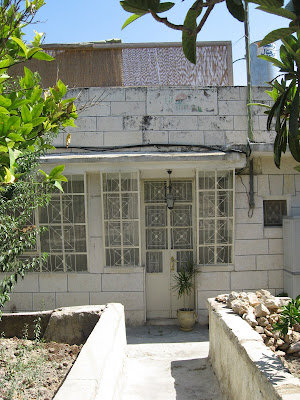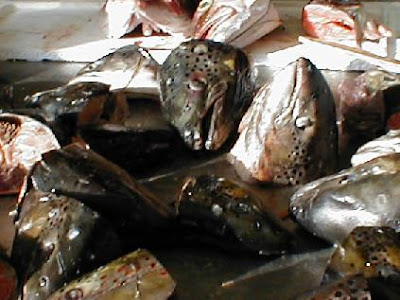
The building with the gold dome is called the Dome of the Rock, which was completed in 691 AD. Gold was not put on the outside of the dome until 1998, after an 8.2 million donation was made from King Hussein of Jordon, who sold one of his houses in London to fund the project. The Dome of the Rock is located on top of the Temple Mount in Jerusalem, above the Western Wall.
 The Temple Mount (see black and white diagram), the man-made platform on which the Dome rests, was greatly enlarged under King Herod the Great. Today, the Dome of the Rock is a shrine, rather than a functional mosque. The functional mosque located on the Temple Mount, the Al Aqsa Mosque (the shorter building shown), was finished in 705 AD. Al Aqsa translates to "the farthest mosque".
The Temple Mount (see black and white diagram), the man-made platform on which the Dome rests, was greatly enlarged under King Herod the Great. Today, the Dome of the Rock is a shrine, rather than a functional mosque. The functional mosque located on the Temple Mount, the Al Aqsa Mosque (the shorter building shown), was finished in 705 AD. Al Aqsa translates to "the farthest mosque".

The world religion Islam was founded by an Arabian from Mecca named Muhammad (Muhammed, Mohammed)(ca.570-632 AD), who claimed he received repeated supernatural revelations from God through the angel Gabriel. Muslims believe this began at age 40 in the Islamic month of Ramadan. These revelations were memorized and written down by his followers and were then compiled into the Muslim bible, the Koran (Qur'an). Muhammad died in 632 at the age of 63 after battling a sickness. Some manuscripts say he was buried in the place where he died. Other manuscripts say Muhammad went on a night journey from Mecca to the farthest Mosque, translated Al Aqsa, and there ascended from the rock to Heaven accompanied by Gabriel. Based on this information, The Dome of the Rock and Al Aqsa Mosque together are considered the third most holy site to Muslims, behind Mecca and Medina.
Many people today believe that the Dome of the Rock was also the exact former sight of the First and Second Jewish Temples, destroyed in 587 BC and 70 AD respectively. Jews are still discussing the exact location of the Holy of Holies, the most sacred part of the temple, in preparation for the construction of a third temple. Jews agree that this location is on top of the Temple Mount. Herein lies the reason that the Temple Mount is one of the most contested pieces of property today.
 Falafel is to Israel what McDonald's is to America: fast food. Falafel (the thing in the pita) is fried chick pea with different types of "salad" including pickles, cabbage, lettuce, tomato, onion, hot sauce, and french fries, which are called chips here. Falafel stands are everywhere.
Falafel is to Israel what McDonald's is to America: fast food. Falafel (the thing in the pita) is fried chick pea with different types of "salad" including pickles, cabbage, lettuce, tomato, onion, hot sauce, and french fries, which are called chips here. Falafel stands are everywhere. 






 I was traveling through the Negev Desert in southern Israel last week where it is more common to see a camel parked next to a house rather than a car.
I was traveling through the Negev Desert in southern Israel last week where it is more common to see a camel parked next to a house rather than a car.





















